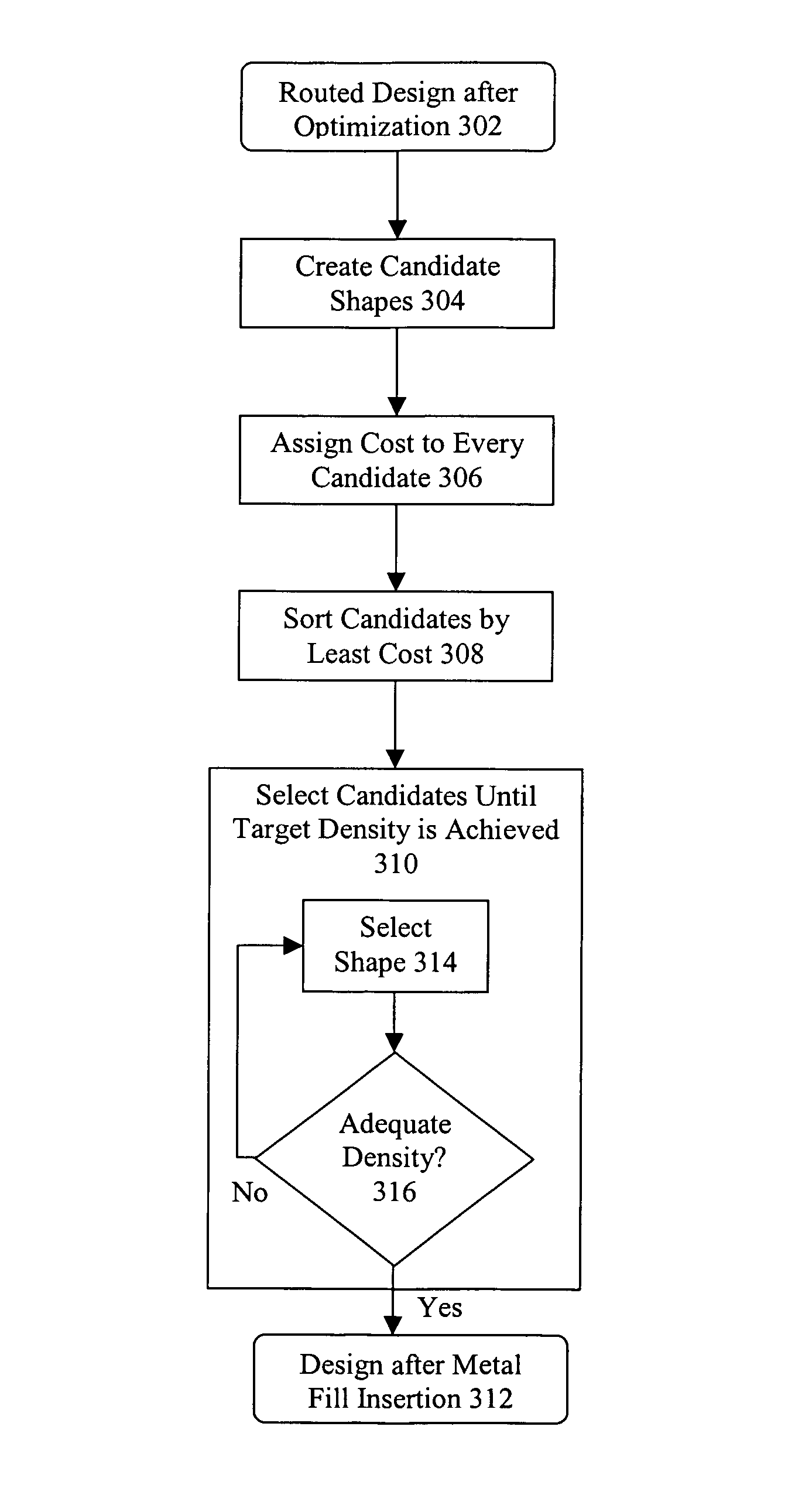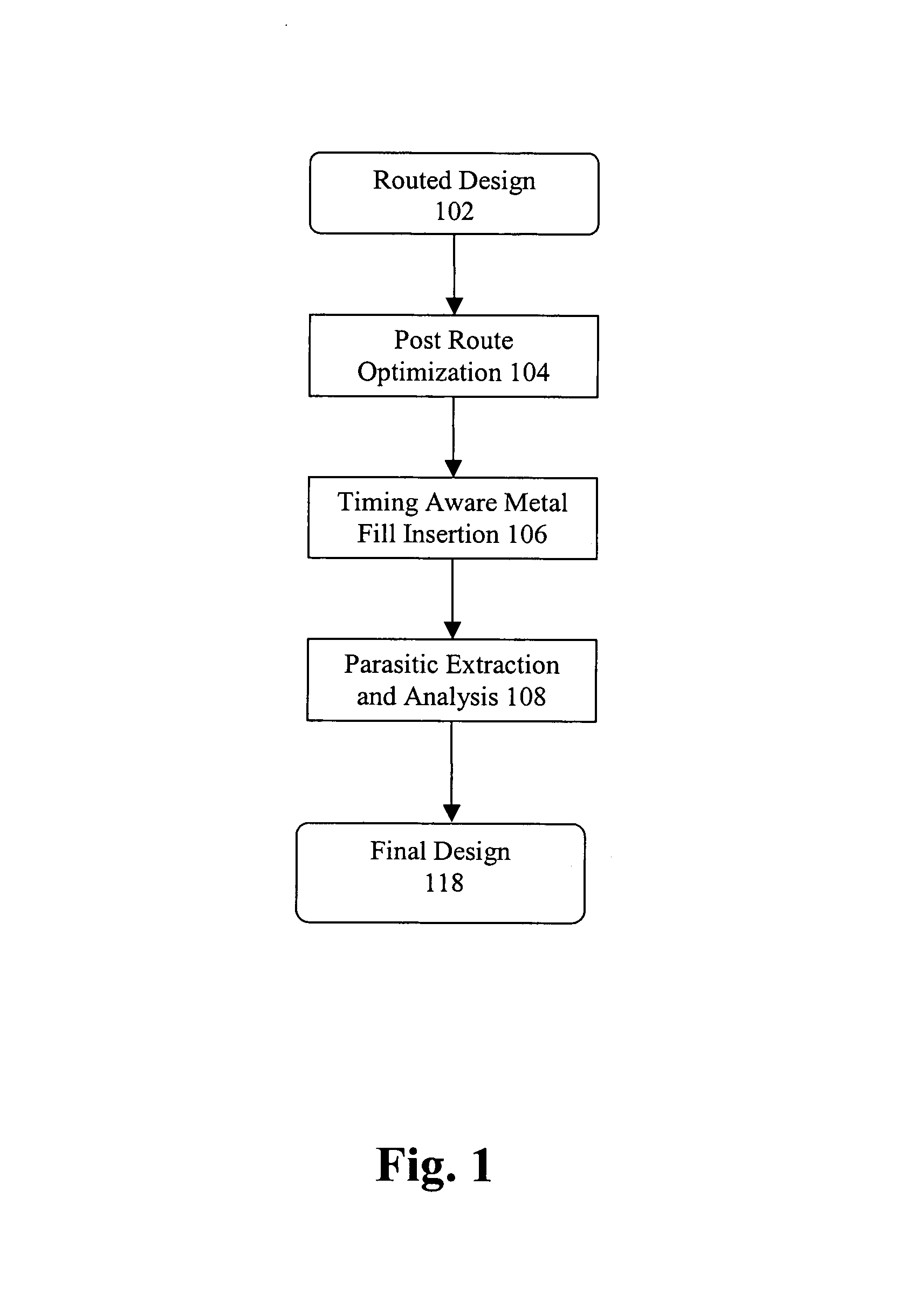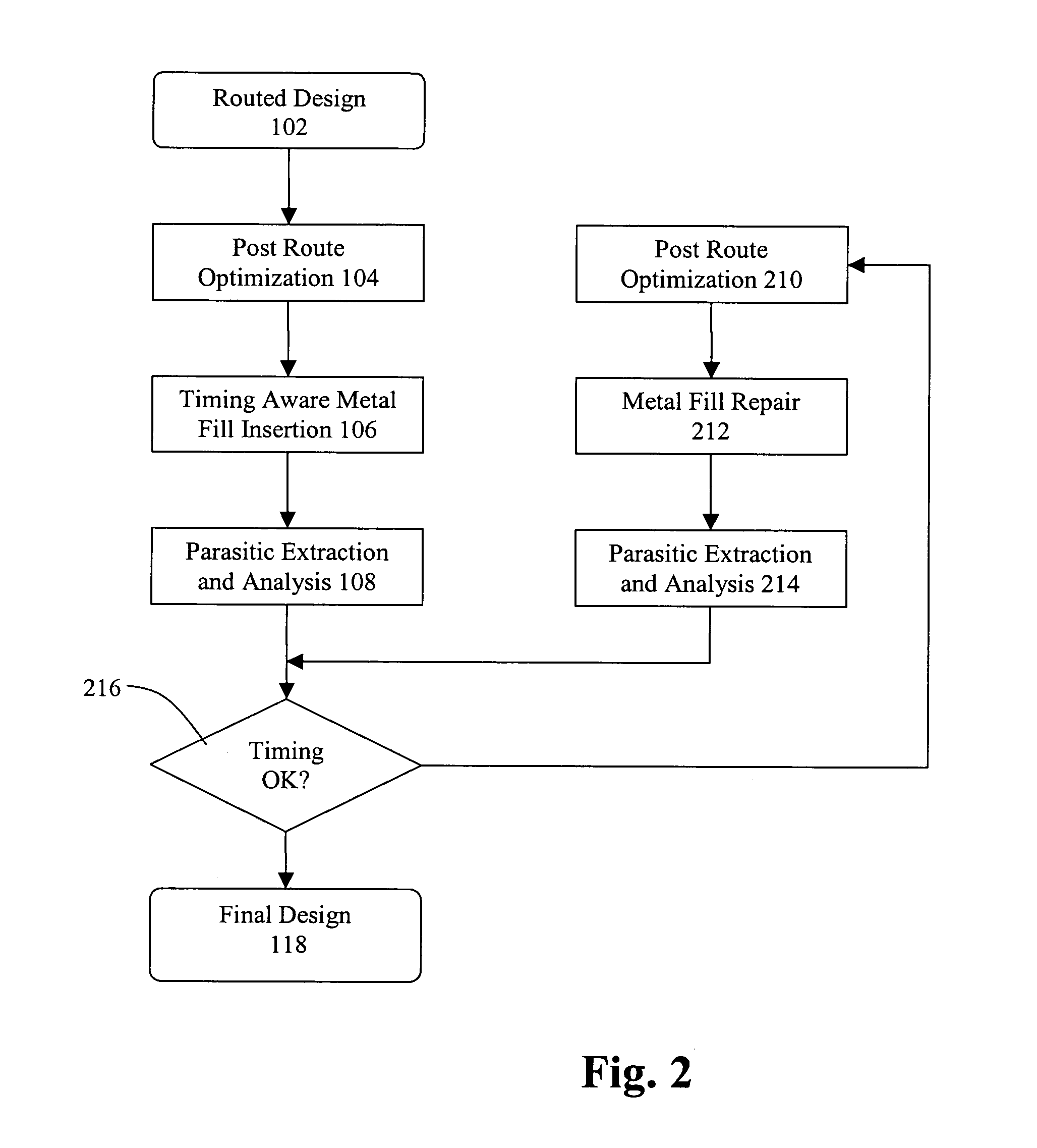Method and system for implementing timing aware metal fill
a technology of timing awareness and metal filling, applied in the field of integrated circuit design and manufacture, can solve the problems of reducing yield and impact circuit performance affecting the performance of the circuit, etc., and achieves the effects of reducing free space available, avoiding harmful capacitance effects, and avoiding or minimizing cross-capacitance problems
- Summary
- Abstract
- Description
- Claims
- Application Information
AI Technical Summary
Benefits of technology
Problems solved by technology
Method used
Image
Examples
Embodiment Construction
[0018]Disclosed is an improved method and system for implementing metal fill for an integrated circuit design which is capable of achieving the preferred density levels while minimizing cross coupling capacitance, effects.
[0019]FIG. 1 shows a process for implementing metal fill according to some embodiments of the invention. The use of this invention will increase the likelihood that the required timing for the device will be met in one pass, preventing the extra iteration(s) of metal fill insertion.
[0020]At 102, the IC design is placed and routed to generate a routed design. Any suitable approach can be taken to place and route the IC design. At 104, post route optimization is performed against the design. For example, compaction techniques may be used to optimize the layout of the IC design.
[0021]At 106, a one pass approach is taken to perform timing aware metal fill insertion into the layout. The one-pass approach permits metal fill to be inserted into the IC design in a manner t...
PUM
 Login to View More
Login to View More Abstract
Description
Claims
Application Information
 Login to View More
Login to View More - R&D
- Intellectual Property
- Life Sciences
- Materials
- Tech Scout
- Unparalleled Data Quality
- Higher Quality Content
- 60% Fewer Hallucinations
Browse by: Latest US Patents, China's latest patents, Technical Efficacy Thesaurus, Application Domain, Technology Topic, Popular Technical Reports.
© 2025 PatSnap. All rights reserved.Legal|Privacy policy|Modern Slavery Act Transparency Statement|Sitemap|About US| Contact US: help@patsnap.com



